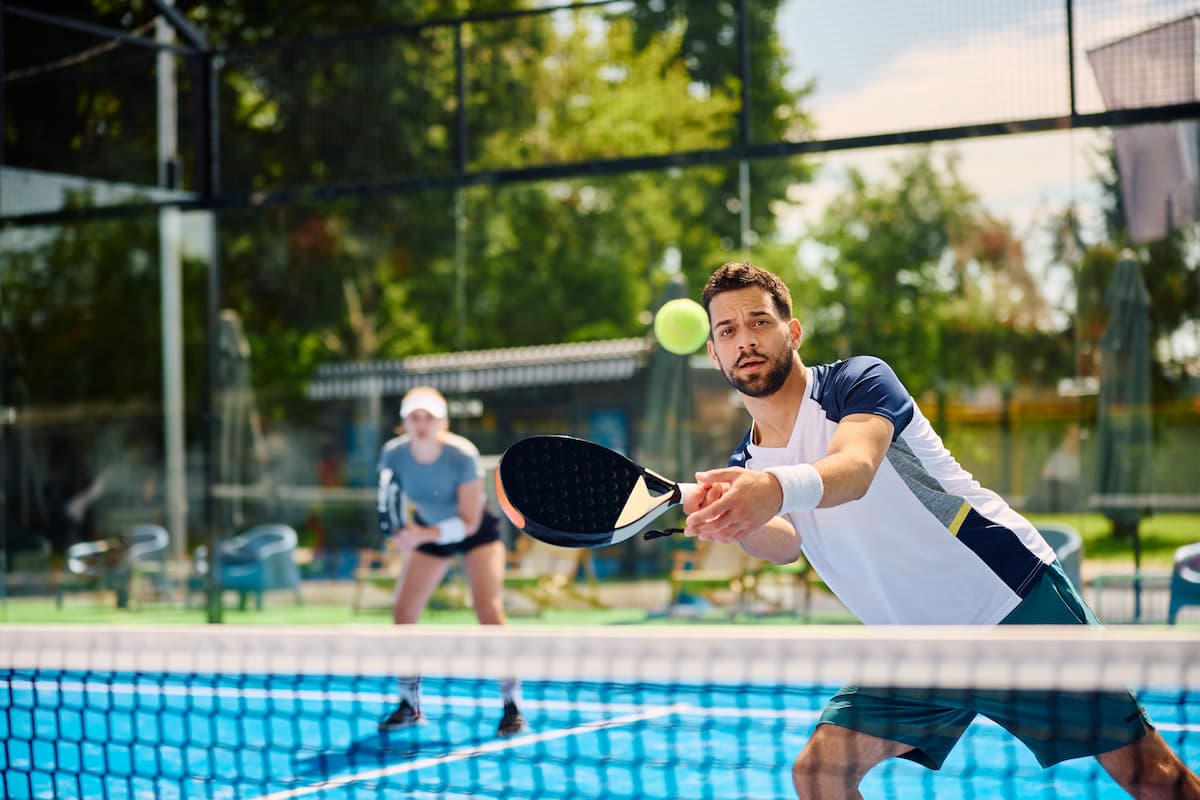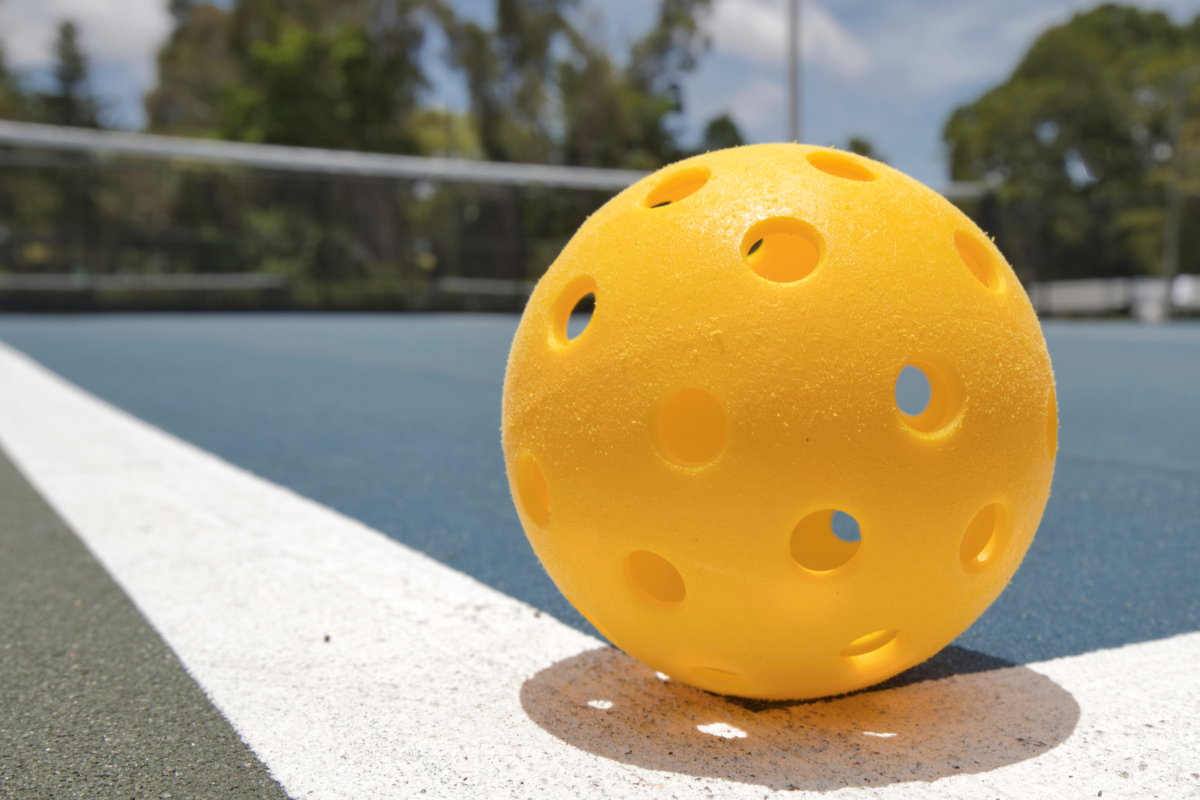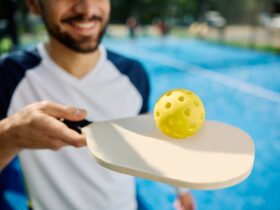Pickleball and tennis both fall under the racquet sports category and share some common elements, but each game has distinct differences that attract their respective fan base.
In this comprehensive article, we will unpack the key contrasts between pickleball and tennis, focusing on aspects like equipment, rules, gameplay, strategy, and fitness requirements.
Pickleball vs. Tennis Comparison
| Element | Pickleball 🏓 | Tennis 🎾 |
|---|---|---|
| Size of Court | 20 x 44 feet | 27 x 78 feet (singles); 36 x 78 feet (doubles) |
| Type of Balls | Plastic with holes | Felt-covered rubber |
| Height of Nets | 36 inches at the ends; 34 inches in the middle | 3 feet (36 inches) at the center |
| Rackets | Solid paddles, no strings | Strung rackets |
| Scoring System | Games to 11, win by 2 | Games to 6 (in a set), win by 2; Tiebreak at 6-6 |
The Evolution of Pickleball and Tennis
Tennis dates back to the 12th century, where it evolved from a simple handball game into its current form as a popular professional sport.
The modern dimensions and rules of tennis were established in the late 19th century by the International Lawn Tennis Federation, which is now known as the International Tennis Federation (ITF).
On the other hand, pickleball was invented more recently in 1965 by three fathers who sought to create a fun, accessible game for their children.
This unique sport combines elements of tennis, badminton, and table tennis, resulting in its rapid growth and popularity across the United States and beyond.
Equipment Differences
Pickleball Paddles vs Tennis Racquets
While both pickleball and tennis involve striking a ball with a racket, there are significant disparities in the design and construction of the equipment.
Tennis racquets are substantially larger, typically weighing between 9 and 12 ounces. They possess strings stretched in a web-like pattern to provide power, spin, and better ball control.
Pickleball paddles are smaller, solid, and made of composite material like wood, aluminum, or graphite.
They usually weigh less than 8 ounces and have perforated grips to reduce sweating and increase maneuverability. These paddles do not have any strings, which results in a wider sweet spot and lesser spin action compared to tennis racquets.
Pickleball vs Tennis Balls
The balls used in pickleball and tennis are markedly different in terms of size, weight, and material.
Tennis balls are larger and made of rubber with a fuzzy fabric covering that allows for improved grip, bounce, and aerodynamics.
A pressurized core helps the tennis ball maintain its shape, performance, and liveliness over time.
In contrast, pickleball is played with a hollow, perforated plastic ball or “whiffle ball.” It is lighter and smaller than a tennis ball, making it more wind-resistant and less bouncy.
The air-filled structure of the pickleball also reduces flight speed and impact force, allowing extended rallies and greater control during gameplay.
Playing Surface and Court Dimensions
- Size: Pickleball courts measure 20 feet by 44 feet, similar to a doubles badminton court. A tennis court has dimensions much larger at about 36 feet by 78 feet (singles) or 36 feet by 96 feet (doubles).
- Surfaces: Both pickleball and tennis can be played on various surfaces like grass, clay, hardcourt, or even indoors. However, each sport may demand specific court conditions or adaptations depending on the surface type. For example, tennis courts may use synthetic turf or acrylic coatings while pickleball courts could feature specially designed sport tiles.
- Lines and Zones: Pickleball courts include unique markings such as the non-volley or “kitchen” zone, which is a seven-foot-long section located on both sides of the net. Players cannot hit the ball directly in the air within this area, making it an important strategic part of gameplay. Tennis courts contain service boxes and alleys but lack any non-volley zones.
Net Height and Positioning
Pickleball utilizes a lower and narrower net than tennis at 36 inches high and 20 feet wide.
In contrast, a tennis net measures around 42 inches high and 36 feet wide – providing more vertical clearance for balls to pass over during rallies or serve returns.
The height difference also impacts player movement, as pickleball demands greater agility near the net while tennis requires considerable baseline skill and range.
Comparing the Rules: Pickleball vs Tennis

Although similarities exist between these sports, many intricacies and game-specific rules make each experience unique.
Here are some key differences:
- Serving: In tennis, players can perform serves with overhead strikes from behind a designated baseline at either end of the court. On the other hand, pickleball serves require underhand swings from below hip height and must be done diagonally across the court with the ball landing in the opponent’s service area.
- Scoring: Tennis follows a points-based scoring system made up of games and sets, with the first player to accumulate six or seven games (and winning by two) awarded a set. Pickleball uses a rally scoring method, where points can only be scored by the serving team and the first side to reach 11 points (with a lead of at least two) wins the match.
- Double Bounce Rule: In pickleball, the double bounce rule dictates that after a serve is put into play, the receiving team must allow the ball to bounce once before returning it. The serving team must also allow the return of serve to bounce once before volleying or striking the ball in the air. This rule is unique to pickleball and does not apply in tennis.
Gameplay, Strategy, and Fitness Requirements
The tempo of the game, tactical approaches, and required athletic prowess are among the many distinctions between these sports.
Tennis typically demands higher levels of physical endurance, strength, and agility due to wider court dimensions, longer match durations, and more strenuous swings involved in shot-making.
In comparison, pickleball offers a less aggressive yet entertaining experience that focuses on placement, finesse, and reflexes rather than power and speed.
Additionally, the slower-moving whiffle ball encourages longer rallies with various dinks, lobs, drives, and volleys that can accommodate players of different skill levels or ages.
Regardless of which sport you prefer, both pickleball and tennis offer an engaging way to stay active, socialize with others, and sharpen your hand-eye coordination.
These contrasting features make each game uniquely enjoyable while catering to diverse interests and abilities within the racquet sports community.







